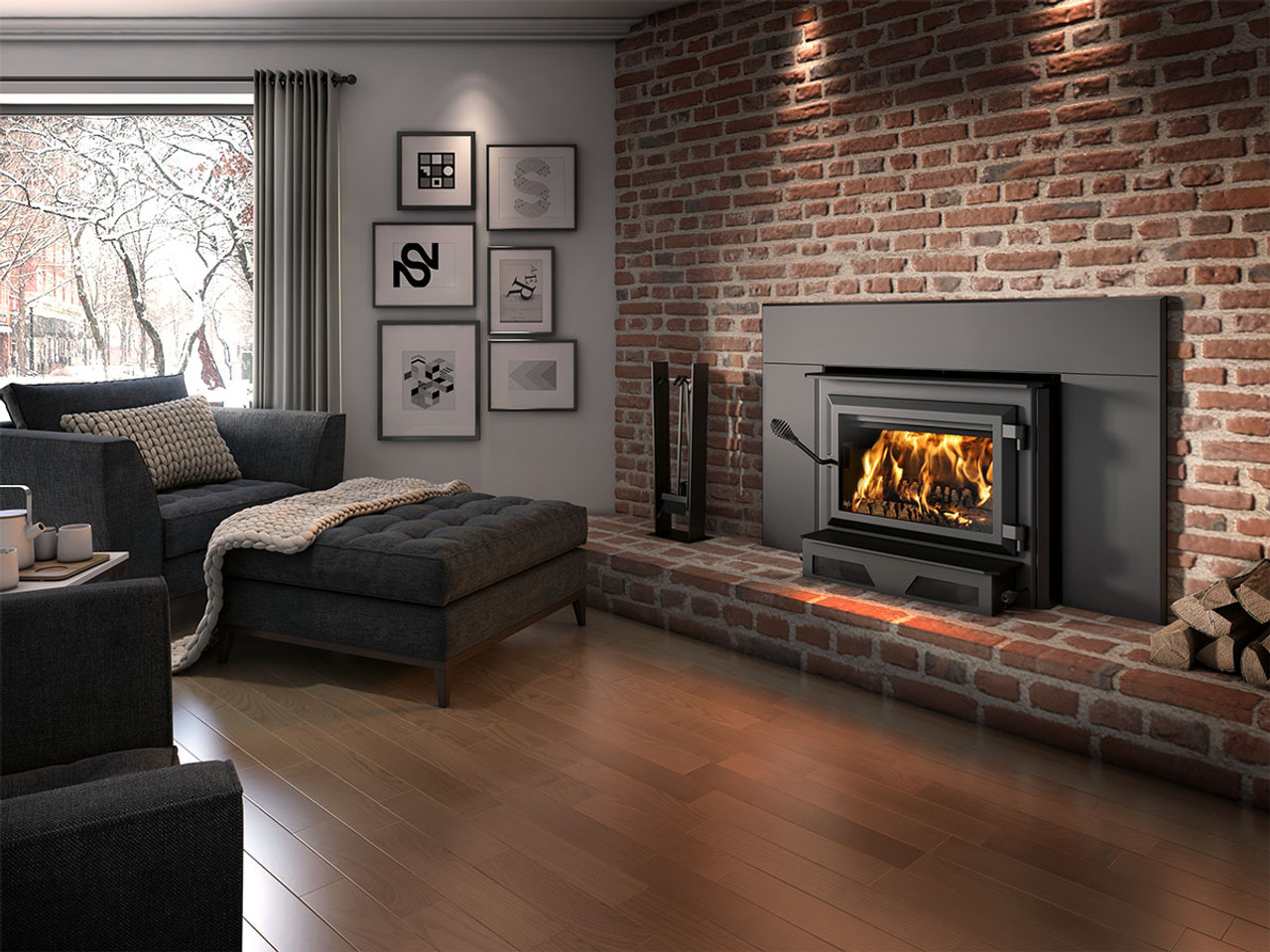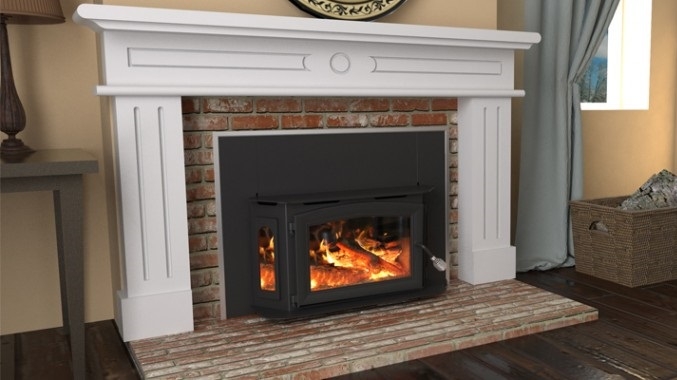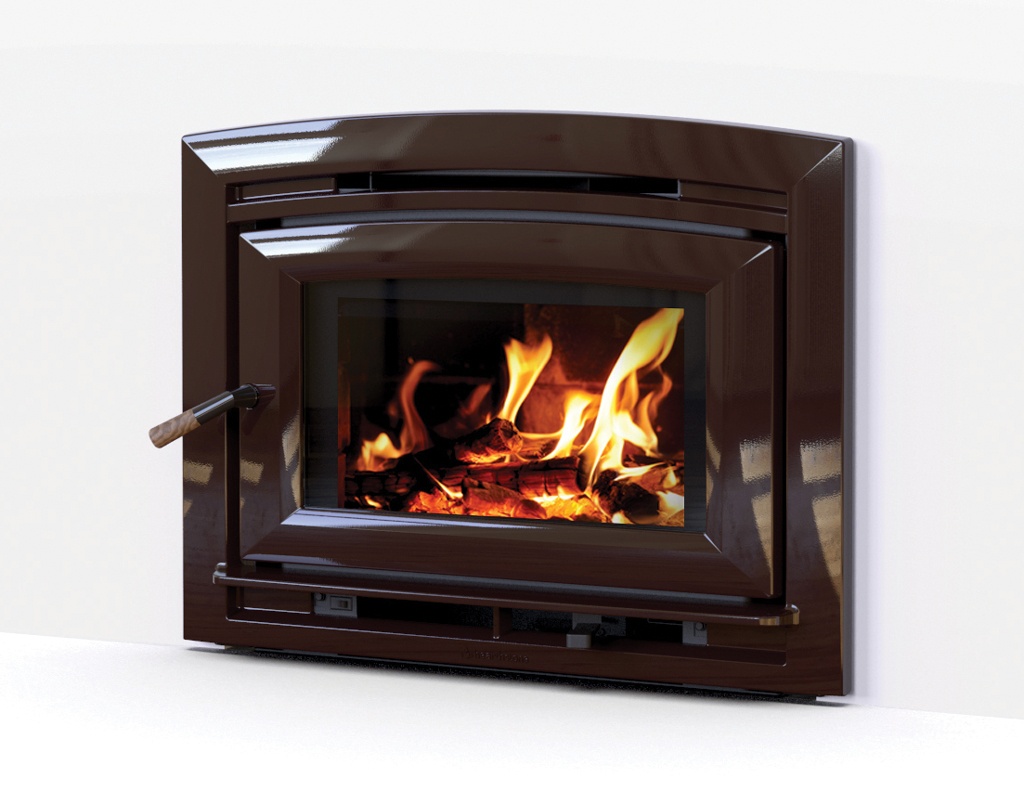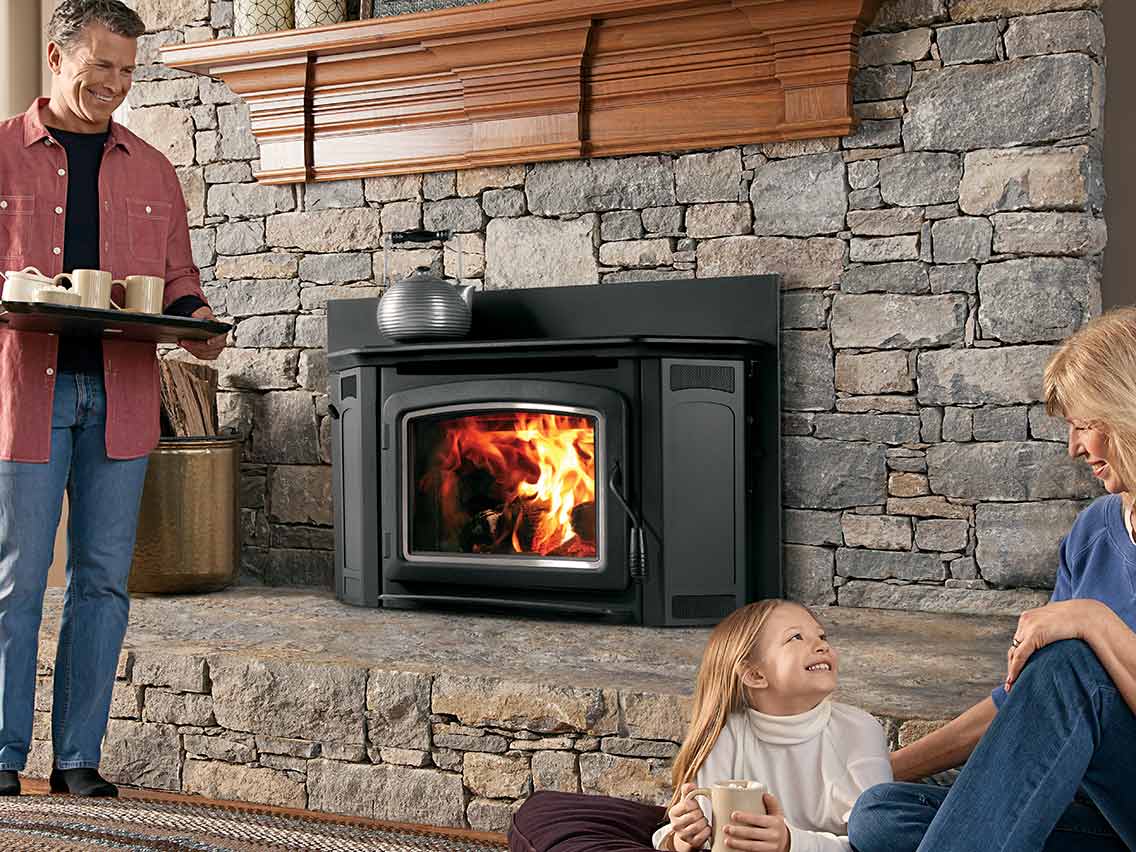Log burning fireplace inserts are a great way to upgrade your existing fireplace, providing better efficiency and warmth. They offer the charm of a traditional wood fire while incorporating modern technology for optimal performance. Here, we’ll explore the benefits, different types, installation process, maintenance tips, and some design inspiration for log burning fireplace inserts.
The Advantages of Log Burning Fireplace Inserts
- Efficiency Boost: Traditional open fireplaces are often inefficient, losing much of the heat up the chimney. Log burning inserts are designed to fit into your existing fireplace, creating a sealed combustion chamber. This design significantly improves heat output and efficiency, warming your home more effectively.
- Cost Savings: With improved efficiency comes reduced heating costs. By burning wood more completely and radiating heat into the room rather than up the chimney, you can save money on energy bills. Over time, the savings can offset the initial investment in the insert.
- Environmentally Friendly: Modern log burning inserts are designed to burn wood more cleanly, reducing emissions and particulate matter. Many models are EPA-certified, ensuring they meet stringent environmental standards. Using a renewable resource like wood also helps reduce reliance on fossil fuels.
- Safety Improvements: A properly installed fireplace insert can make your home safer. The sealed chamber reduces the risk of sparks or embers escaping, which can cause fires. Additionally, the controlled combustion process minimizes the build-up of creosote in the chimney, reducing the risk of chimney fires.
- Aesthetic Appeal: Log burning inserts come in a variety of styles and finishes, allowing you to choose one that complements your home’s decor. Whether you prefer a classic look with a cast iron finish or a modern design with clean lines and glass doors, there’s an insert to suit your taste.

Types of Log Burning Fireplace Inserts
Catalytic Inserts: Catalytic inserts use a catalytic combustor to reduce emissions and increase efficiency. The combustor breaks down the smoke and gases produced by burning wood, allowing them to burn at lower temperatures. This results in longer burn times and reduced creosote build-up.
Non-Catalytic Inserts: Non-catalytic inserts rely on a series of air tubes or baffles to create a secondary combustion process. This design burns the wood gases more completely, resulting in improved efficiency and lower emissions. Non-catalytic inserts are typically easier to maintain and operate than catalytic models.
Built-In Blowers: Many log burning inserts come with built-in blowers that help circulate warm air throughout the room. These blowers can be either manually or thermostatically controlled, allowing you to customize the heat output to your preference. Blowers are especially useful for heating larger spaces.
Radiant Inserts: Radiant log burning inserts are designed to radiate heat directly from the unit’s surface. These inserts are ideal for smaller rooms or spaces where direct heat is desired. Radiant inserts can create a cozy and comfortable atmosphere with the look and feel of a traditional fireplace.
Insert with Surrounds: Some log burning inserts come with decorative surrounds that frame the insert and enhance its appearance. Surrounds can be made of materials like metal, stone, or tile, and come in various styles to match your home’s decor. They provide a finished look and can serve as a focal point in the room.
Installing a Log Burning Fireplace Insert
Preparing the Fireplace: Before installation, ensure your existing fireplace and chimney are in good condition. Clean the fireplace thoroughly and inspect for any damage or cracks that need repair. It’s also a good idea to have the chimney professionally cleaned and inspected to ensure it’s free of obstructions and safe for use.
Measuring for the Insert: Measure the dimensions of your fireplace opening to ensure the insert will fit properly. Take note of the width, height, and depth, as well as the size of the hearth. Make sure the insert you choose is compatible with your fireplace’s dimensions.
Selecting the Right Insert: Choose a log burning fireplace insert that meets your heating needs and fits your aesthetic preferences. Consider the size of the area you want to heat, the efficiency rating, and any additional features like blowers or decorative surrounds. Consult with a professional if you’re unsure which model is best for your home.
Professional Installation: While some homeowners may choose to install a fireplace insert themselves, it’s often best to hire a professional. Proper installation ensures the insert operates safely and efficiently. A professional installer can also make any necessary modifications to your fireplace and chimney to accommodate the insert.
Testing and Adjustments: After installation, test the insert to ensure it’s working correctly. Light a small fire and check for proper draft and heat output. Make any necessary adjustments to the damper, air controls, or blower settings to achieve optimal performance. Always follow the manufacturer’s instructions for operating and maintaining your insert.
Maintenance Tips for Log Burning Fireplace Inserts
Regular Cleaning: Keep your fireplace insert clean to ensure it operates efficiently. Remove ashes regularly, but leave a small layer to help insulate the firebox. Clean the glass doors with a fireplace glass cleaner to maintain a clear view of the flames. Periodically check for and remove any creosote build-up in the chimney.
Inspecting Components: Regularly inspect the components of your fireplace insert, including the door seals, air controls, and catalytic combustor (if applicable). Replace any worn or damaged parts to ensure safe and efficient operation. Check the blower and air filters if your insert has a blower system, and clean or replace them as needed.
Chimney Maintenance: Have your chimney professionally cleaned and inspected at least once a year. This helps prevent creosote build-up and ensures proper ventilation. A clean chimney reduces the risk of chimney fires and improves the efficiency of your fireplace insert.
Monitoring for Wear and Tear: Over time, the firebox and other components of your insert may show signs of wear and tear. Look for cracks, warping, or other damage that could affect the insert’s performance. Address any issues promptly to prevent further damage and maintain the safety of your fireplace.
Following Manufacturer Guidelines: Always follow the manufacturer’s guidelines for maintaining and operating your log burning fireplace insert. This includes recommended cleaning schedules, part replacements, and fuel types. Proper maintenance ensures your insert operates efficiently and safely for many years to come.
Styling Ideas for Log Burning Fireplace Inserts
Classic Mantel: Enhance the look of your log burning fireplace insert with a classic mantel. Choose a wooden or stone mantel that complements the insert’s design and your home’s decor. Decorate the mantel with seasonal accents, family photos, or artwork to create a personalized and inviting focal point.
Rustic Charm: For a cozy, rustic look, pair your fireplace insert with a reclaimed wood surround or stone accents. Add decorative elements like wrought iron tools, a log holder, and a cozy rug to complete the rustic aesthetic. This style creates a warm and welcoming atmosphere reminiscent of a cabin retreat.
Modern Minimalism: If you prefer a sleek, modern look, opt for a minimalist design with clean lines and neutral colors. Choose a fireplace insert with a simple black or metallic finish and pair it with a streamlined mantel or no mantel at all. Keep the decor minimal and focus on a few statement pieces to create a contemporary and sophisticated space.
Traditional Elegance: For a timeless and elegant look, select a fireplace insert with classic detailing and pair it with a marble or granite surround. Add decorative moldings, a gilded mirror, and antique furnishings to create a refined and luxurious atmosphere. This style exudes sophistication and charm.
Eclectic Mix: Embrace an eclectic design by mixing and matching different styles and materials. Combine a modern fireplace insert with vintage decor, or pair a rustic surround with contemporary art. The key to eclectic styling is to create a cohesive look through the use of color, texture, and pattern, making your fireplace a unique and personalized focal point.
HEI240 Ventis Wood Burning Fireplace Insert
Breckwell Wood Fireplace Insert SW180I
Wood Burning Fireplace Insert – Frederick MD Wood Insert Repair
GMi 70 – HearthStone Stoves
Montlake 300 – IronStrike
Regency Cascades Wood Insert I2500
Related Posts:









